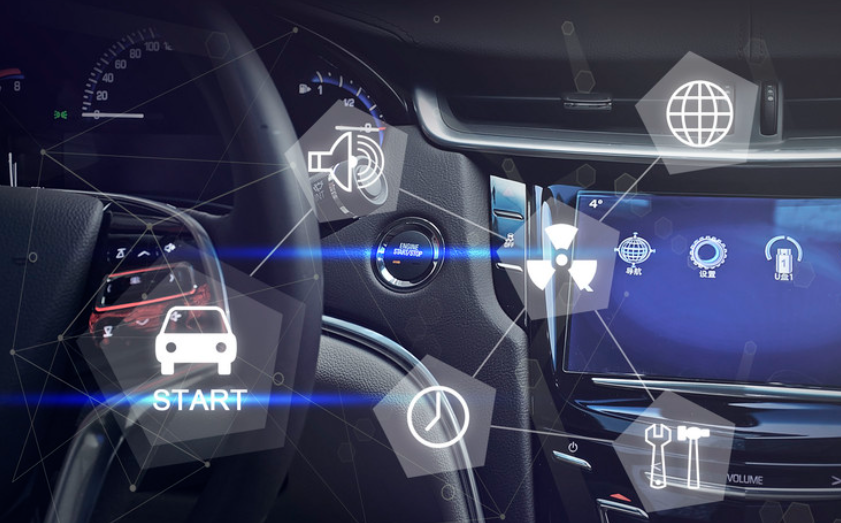The Engine for Intelligent Driving: The importance of system-level chips in cars

Today, with the rapid development of the automobile industry, intelligent driving technology is like that runaway wild horse, changing the entire transportation ecosystem at an unprecedented speed. In this revolution, system-on-chip (SoC) is a very important driving force. It is not simple, it not only provides important computing and processing power to smart cars, but also plays an irreplaceable role in ensuring safety, improving efficiency, and enhancing user experience.
What is a system-level chip?
SoC is to put several functions of the computer system into a single chip, such as the processor, memory, input and output interface subsystem functions, it is wrapped round. In smart cars, SoC is widely used, automatic driving, on-board entertainment systems, information and communication, energy management, it can be found everywhere. It has high integration and low power consumption, which makes the in-vehicle system not only more efficient, but also saves space, which has a good impact on design, manufacturing and operation.
The heart of intelligent driving
That's the combination of sensors and SOCs. Whether intelligent driving can work depends on its real-time perception of the surrounding environment and its ability to make efficient decisions. Sensors, like lidar, cameras, radars, collect data, and the SoC processes that data with powerful algorithms that allow the car to react in real time. For example, when the car is running, the camera captures the road condition information, and then sends the data to the system-level chip, which then uses complex computational models to analyze, to determine how the car should run and when to brake.here, the computing power of the SoC is the key to intelligent driving.
Safety and reliability
In an intelligent driving system, safety is the most important thing. This system-level chip plays a key role in keeping the vehicle safe. By integrating several functional modules into a single chip, SoC reduces the complexity of hardware interactions and reduces potential points of failure. Moreover, the redundant design and real-time fault detection technology in the SoC can improve the reliability of the system. If something goes wrong, the SoC can quickly react and take appropriate safety measures, such as switching to a backup control system or activating automatic braking.
Not only is the hardware security design, the SoC also needs strong software support. Smart cars rely on complex software systems to process data and make decisions, so keeping the software safe and stable is also important. Many automakers are working with chip design companies to put together a secure hardware and software ecosystem to deal with cyberattacks and potential vulnerabilities in the system, ensuring the safety and use of intelligent autonomous driving.
And this very efficient energy management. With the rise of new energy vehicles, the importance of energy management technology is rising. System-level chips have great potential for energy management and efficiency optimization. By using intelligent algorithms, the SoC can accurately manage the battery system, optimize the charging and discharging process, and improve the efficiency and life of the battery. At the same time, SoC can also look at the energy consumption of the vehicle at any time, and optimize the driving route, which can achieve the effect of energy saving.
For example, many car manufacturers are working on energy management systems based on machine learning. By analyzing previous data, the SoC can guess in advance how much energy is likely to be required during driving, and then dynamically adjust according to many factors such as road conditions, driving habits, and real-time weather, so that the best energy consumption ratio can be achieved.
Let's talk about improving the user experience. Compared with traditional cars, smart cars provide users with more functions and better experience, which can not be separated from the support of system-level chips. Socs not only play an important role in core driving functions, but also in in-vehicle infotainment systems.
Today's SOCs can support high-resolution displays and streaming media services, providing users with a more intuitive interface and a smoother operating experience. For example, many intelligent driving cars are equipped with navigation systems, voice recognition and online entertainment options, which are based on the powerful SoC computing power to achieve. Users can not only enjoy rich audio and video entertainment, but also use voice control through intelligent assistant, driving comfort and safety are improved.
Future
As technology evolves faster and faster, the automotive industry has to deal with changing market demands and safety standards. The flexibility of the system-level chip allows it to adapt quickly to these changes. Many high-end SOCs support Over-The-Air (OTA) updates, which means automakers can push software updates and enhancements to the car wirelessly, without the owner having to visit a service station. This not only improves the user experience, but also extends the service life of the car and reduces unnecessary maintenance costs.
Now, 5G technology has developed, and system-level chips have begun to develop in the direction of faster communication speed and lower latency, which brings new opportunities for intelligent driving. With faster data speeds, cars can communicate in real time with the surrounding infrastructure and other cars, making smarter decisions and driving more efficiently.
In the future of intelligent driving, the status and role of system-level chips are definitely becoming more and more important. As technology continues to evolve, the computing performance and integration of SOCs continue to improve, paving the way for innovative intelligent driving solutions. This includes more advanced autonomous driving technology and a more comprehensive intelligent driving ecosystem. As people in this industry continue to improve, system-level chips will certainly play a central role in the development of smart cars.
Die Produkte, an denen Sie interessiert sein könnten
 |
TPCM-2.4-5 | CMC 2.41MH 5A 2LN TH | 6894 More on Order |
 |
AA53002-015 | XFRMR TOROIDAL 300VA CHAS MOUNT | 8352 More on Order |
 |
62054-P2S02 | XFRMR TOROIDAL 15VA CHAS MOUNT | 3526 More on Order |
 |
62045-P2S02 | XFRMR TOROIDAL 10VA CHAS MOUNT | 2430 More on Order |
 |
62043-P2S02 | XFRMR TOROIDAL 10VA CHAS MOUNT | 5472 More on Order |
 |
62012-P2S02 | XFRMR TOROIDAL 3.2VA CHAS MOUNT | 3204 More on Order |
 |
62005-P2S02 | XFRMR TOROIDAL 1.6VA CHAS MOUNT | 7668 More on Order |
 |
70054K | XFRMR TOROIDAL 15VA THRU HOLE | 4716 More on Order |
 |
70043K | XFRMR TOROIDAL 10VA THRU HOLE | 5562 More on Order |
 |
70041K | XFRMR TOROIDAL 10VA THRU HOLE | 2826 More on Order |
 |
70031K | XFRMR TOROIDAL 7VA THRU HOLE | 8658 More on Order |
 |
70014K | XFRMR TOROIDAL 3.2VA THRU HOLE | 5562 More on Order |
 |
70013K | XFRMR TOROIDAL 3.2VA THRU HOLE | 4392 More on Order |
 |
70003K | XFRMR TOROIDAL 1.6VA THRU HOLE | 2520 More on Order |
 |
70025K | XFRMR TOROIDAL 5VA THRU HOLE | 4068 More on Order |
 |
62082-P2S02 | XFRMR TOROIDAL 50VA CHAS MOUNT | 4986 More on Order |
 |
62033-P2S02 | XFRMR TOROIDAL 7VA CHAS MOUNT | 6480 More on Order |
 |
62024-P2S02 | XFRMR TOROIDAL 5VA CHAS MOUNT | 4824 More on Order |
 |
62084-P2S02 | XFRMR TOROIDAL 50VA CHAS MOUNT | 7284 More on Order |
 |
70034K | XFRMR TOROIDAL 7VA THRU HOLE | 8088 More on Order |
 |
AC1200 | CURR SENSE XFMR 200A T/H | 2142 More on Order |
 |
AC1050 | CURR SENSE XFMR 50A T/H | 7362 More on Order |
 |
AC1015 | CURR SENSE XFMR 15A T/H | 5166 More on Order |
 |
AC1010 | CURR SENSE XFMR 10A T/H | 5963 More on Order |









